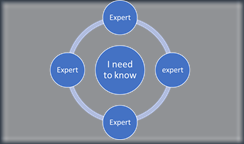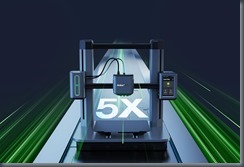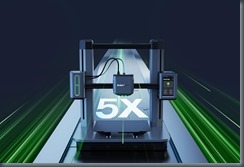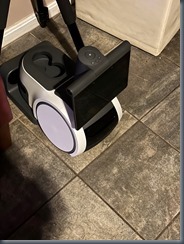There are a couple of crowdfunding projects that are now shipping that I am excited about. One of them is the Drawflab camera. This, combined with the already shipping Benro camera mount, makes for a very powerful combination. The value of crowdfunding is the opportunity to be ahead of the mass market. To adopt and use technologies before most people do. So I am looking forward to the box with the Dwarflab Camera. It is supposed to arrive in the next 2-3 weeks! It is like a late Christmas present! Although I have been waiting more than a year!
 For the 100th time, I will point out that crowdfunding is risky. You are not guaranteed the campaign will deliver what they are trying to build. I run about an 80% success rate on Kickstarter and have stopped backing projects on Indigogo because the success rate on IndieGoGo is closer to 50%. I understand failure when someone does something new, but 1 out of 2 is a little too high. Unless you are playing baseball and are a hitter, that is the only case I know of where 1 out of 2 is a really good thing (no MLB player has ever batter .600 for a season, of course, you have to have the minimum number of hits to quality).
For the 100th time, I will point out that crowdfunding is risky. You are not guaranteed the campaign will deliver what they are trying to build. I run about an 80% success rate on Kickstarter and have stopped backing projects on Indigogo because the success rate on IndieGoGo is closer to 50%. I understand failure when someone does something new, but 1 out of 2 is a little too high. Unless you are playing baseball and are a hitter, that is the only case I know of where 1 out of 2 is a really good thing (no MLB player has ever batter .600 for a season, of course, you have to have the minimum number of hits to quality).
The other thing to consider is that some of these projects still need to be delivered within the timeline projected. So Drawflab is late on their solution. By nearly a year, there are many other connected telescopes and cameras like Drawflab already on the market. Effectively someones by the time you get the tech, it is no longer state of the art. It is a risk that, at times, is worth it. But it is a secondary risk for CrowdFunding that you have to consider. As it may miss the mass market of other solutions, make sure it does what you want when you pledge to the campaign. Plus, take a hard look at IndieGoGo campaigns; they are much riskier.
.doc








